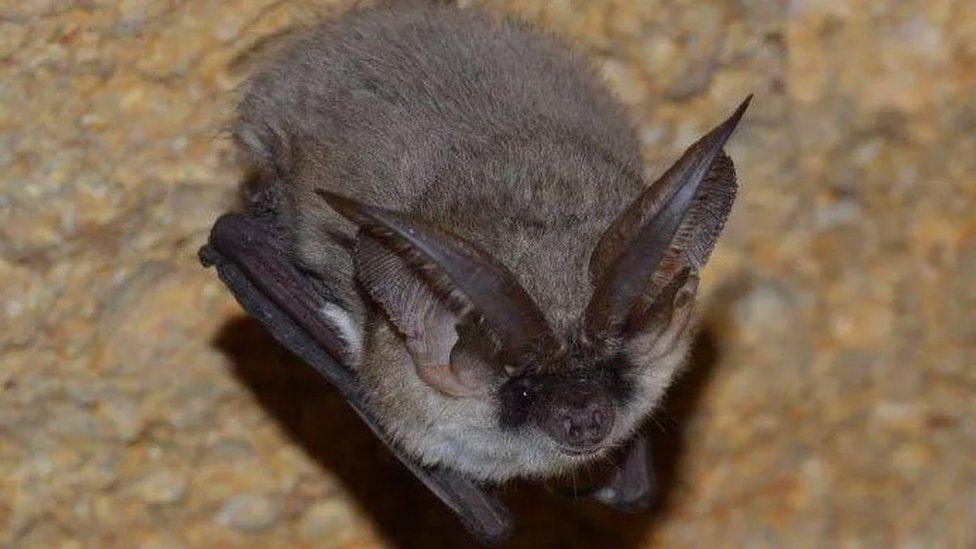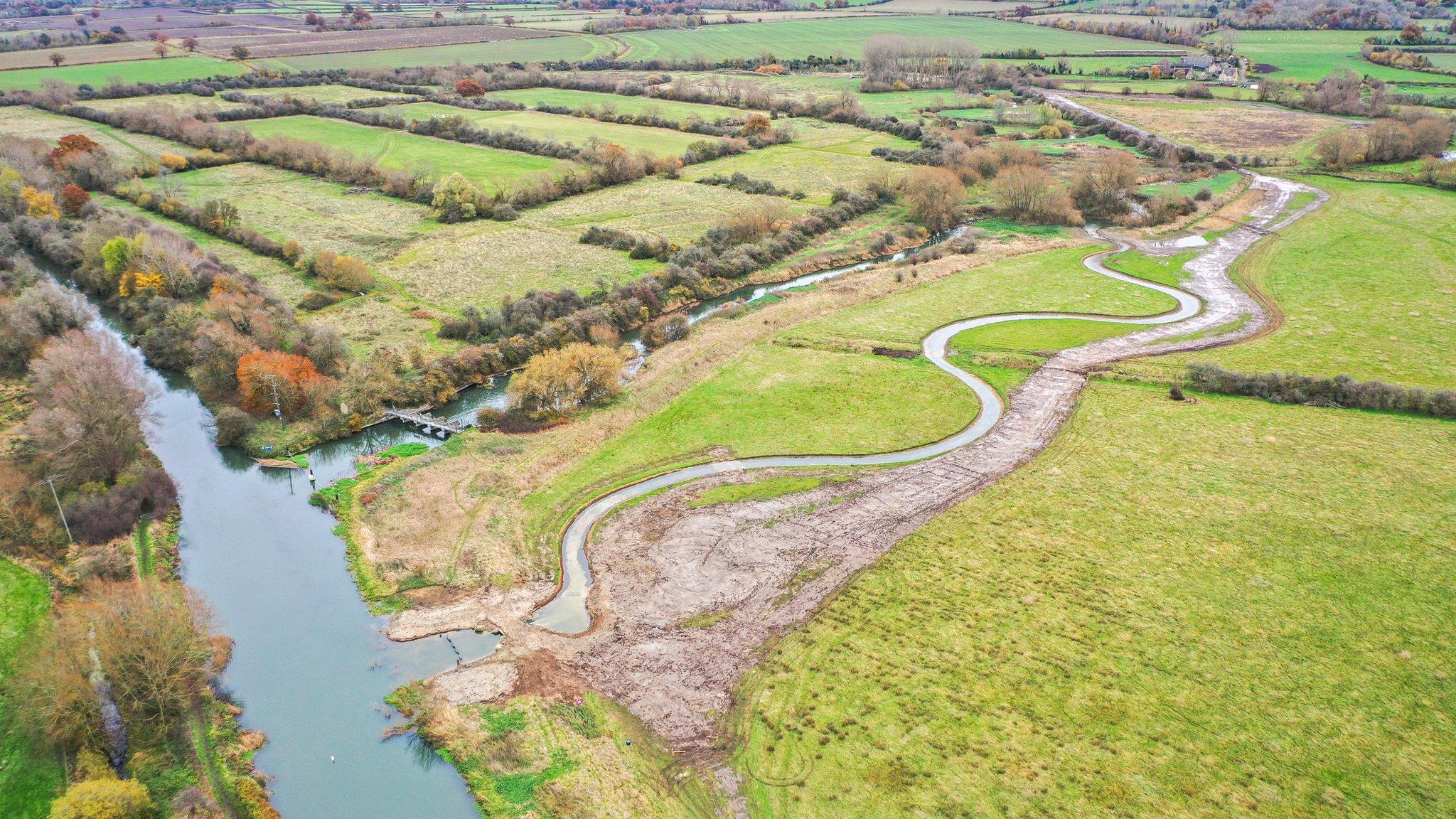DNA analysis finds rare bat roosting in Somerset church
- Published

Grey long-eared bats were found living in a Somerset church
One of the UK's rarest bats has been discovered roosting in a church in Somerset.
The grey long-eared bat was found in a church in the Blackdown Hills on the border with Devon.
It was identified by DNA analysis of bat droppings by volunteers from the National Bats in Churches Survey.
It is only the second time the species has been discovered by the survey. In 2020 similar analysis found evidence of the bats living in east Devon.
Claire Boothby, training and surveys officer at Bats in Churches, said: "As we know so few grey long-eared bat roosting sites, each confirmation of the species is precious.
"Through the National Bats in Churches Survey we've gained records from more than 700 churches across the country, showing the power of citizen science."
She continued: "Thanks to our team of volunteers, our research will give us needed knowledge to better conserve bats and provide information and support for churches."
Ms Boothby said as grey long-eared bats look so similar to brown long-eared bats, a relatively common species, DNA testing of their droppings is one of the most effective ways to tell them apart.
She said because of that, it was likely the roosting sites of grey long-eared bats were under reported.

Grey long-eared bat numbers have declined due to habitat loss
There are thought to be just 1,000 grey long-eared bats in England and the species has been badly hit by habitat loss.
Its preferred hunting ground of "unimproved grassland" - open spaces that have never been ploughed, reseeded or heavily fertilised - has declined by 92% in the past century, according to the Bat Conservation Trust.
'Very encouraging'
Bats in Churches has not disclosed the exact location of the churches in Devon and Somerset where the bats were found in order to protect their roosts.
Carol Williams, director of conservation at Bat Conservation Trust, said: "It's very encouraging to be aware of more records coming in from Somerset.
"When there are so few of this species left in England, knowing where the remaining animals are is of great importance."
The grey long-eared bat was one of 20 target species for the Back from the Brink, external project which ran between 2017 and 2021.
It brought together a coalition of conservation bodies to save some of England's most threatened species.
Over the course of the programme, conservationists worked to enhance 80 hectares of foraging habitat in Devon, and to improve the habitats between roosts in order to connect different colonies.
The project also ran an education programme to increase awareness of the grey long-eared bat and improved the monitoring of the species.
Edward Wells, Somerset Bat Group member, said: "What is quite clear is that we are getting more and more records of grey long-eared bats coming over the last five years.
"It's quite likely that it has been under-recorded, not least because its close relative, the brown long-eared bat, is our third commonest species and observers tend to go with the most likely identification."

Follow BBC West on Facebook, external, Twitter, external and Instagram, external. Send your story ideas to: bristol@bbc.co.uk
Related topics
- Published1 November 2022

- Published25 October 2022

- Published12 October 2022
